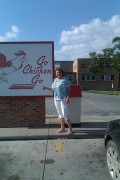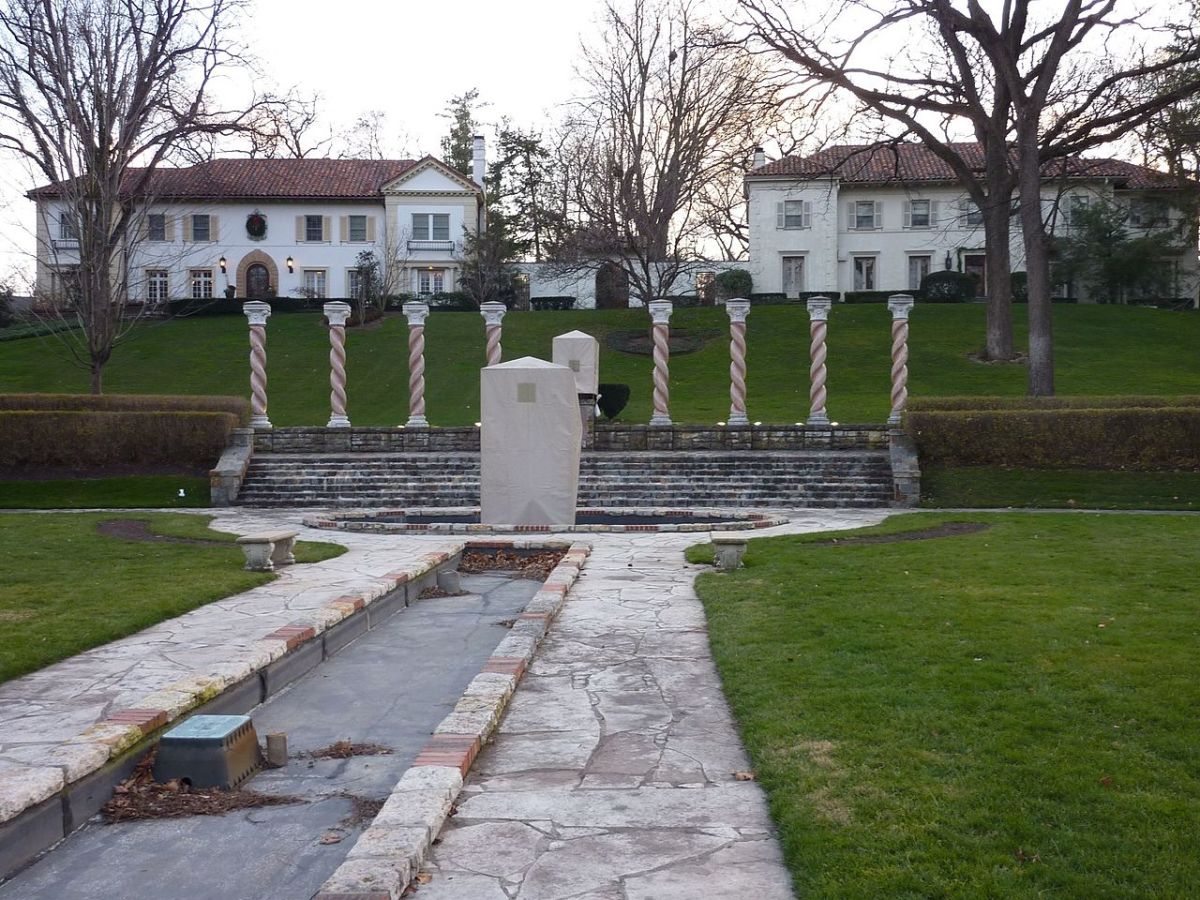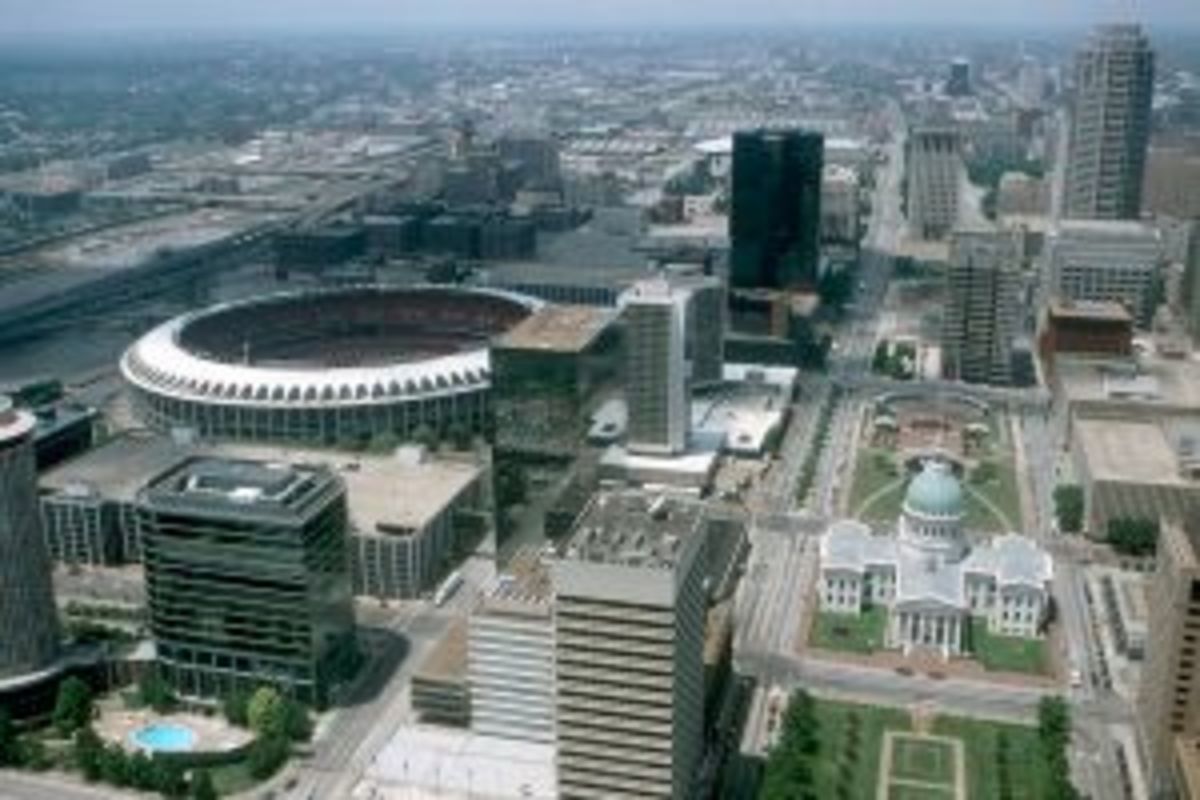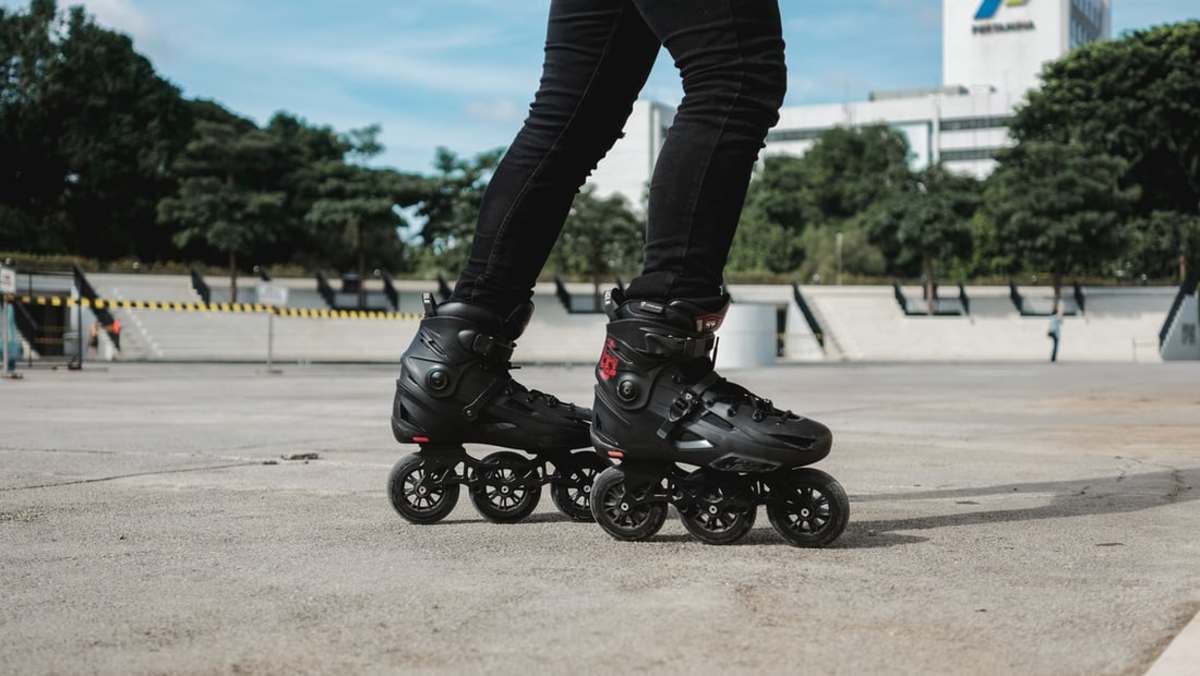Traveling Around - Kansas City, Missouri - Negro Leagues Baseball Museum
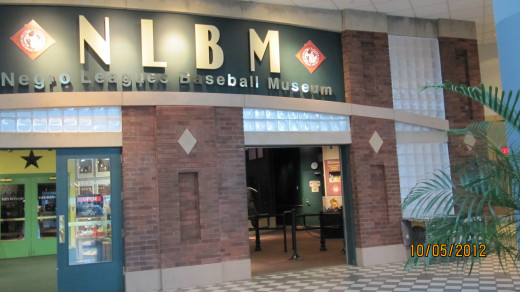
History Of The Museum
A group of former Negro Leagues baseball players decided in 1990 that the history of Negro League baseball should be preserved. The Negro League Baseball Museum was founded. For four years they used a small single rooom office in Kansas City, Missouri. In 1994 they moved to a 2,000 square foot space in the Lincoln Building and opened an exhibit that included photographs and interactive displays. High points of the residency at the Lincoln Building were the celebrations of the 75th Anniversary Reunion of the Negro Leagues and a visit by vice president Al Gore.
About this time, city officials began planning to resurrect the Historic District and to build a new home to showcase Kansas City's jazz heritage. They raised twenty million dollars for a building to host the American Jazz Museum and to provide a new home for the Negro Leagues Baseball Museum. 10,000 square feet in the new 50,000 square foot building was dedicated to the Negro Leagues Baseball Museum. The building opened in September, 1997, and the Baseball Museum following quickly in November.
During the recession while began in the mid 2000s the museum fell on hard times. The stream of visitors shrank to just a trickle. Corporate sponsors, longtime donors and board of director members became unhappy. Avid supporters began to wonder if the museum could survive. In 2006, the most ardent supporter and face of the Negro Leagues Baseball Museum - Buck O'Neil, a first baseman and manager most for the Kansas City Royals - died. This caused an upheaval in the managing structure of the organization and in this disarray things got worse. In 2011, however, the problems were resolved and in 2012 the museum returned to profitability.
In an effort to sustain this drive to success, the organization is teaming with local corporate sponsors to establish small local events in an attempt to draw in Kansas City residents. In 2014 they planned a traveling exhibition that featured the stories of Hispanic players and how the leagues helped push Latin American players into the major leagues.
The Museum District Of Kansas City
The museum is located a few blocks east of I-29/35 and a few blocks south of I-70 in central Kansas City, Missouri. This area is home to the Gem Theater, the Blue Room Jazz Club, an African-American newspaper "The Call", the offices of the Mutual Musicians Foundations, and many restaurants and music clubs.
It is in the historic district of 18th and Vine at 1616 E. 18th Street in Kansas city and shares space with the American Jazz Museum. There is on street parking and a public parking lot within a few blocks of the museum.
The Museum
African Americans began playing baseball shortly after the Civil War. During those early years, black players gradually found their way onto teams composed of white players. In the late 19th century Hall of Famer Cap Anson refused to play on a field where the teams were of mixed races and racism and “Jim Crow” laws would force the Negro players from these teams by 1900. Black players formed their own teams and “barnstormed” around the country to play anyone who would challenge them. In 1920, an organized league structure was formed. This museum is dedicated to those teams and the players of that time as well as some more modern history after the leagues folded in the early 1960s.
The museum is designed as a large wheel with a hub in the center. Entry to the museum is on the outer rim of the wheel and the pathway is designed to move around the hub center and direct the viewer through the history of the league.
The center of the museum is dedicated to the “Coors Field of Legends”. A team of nine outstanding players replicated in life-sized bronze statues are arranged on a miniature playing field complete with scoreboard and dugout. A tenth player - Martin Dihigo, the only player in the history of baseball to be in the Hall of Fame in five different countries (Mexico, Cuba, Venezuela, the Dominican Republic, and the USA at Cooperstown, NY) stands at home plate.
The first exhibit in the circular presentation is the Grandstand Theater where a 15 minute film is presented every half hour. The film is about the history of black players and the formation of their leagues. Some spectacular plays on the field are documented here. In this circular pathway, there is a diorama of a room where Negro League players would stay while on the road.
“Early Years & Pioneers”, “Clown Teams and Beisbol”, and “Changing Times” are a few of the subject areas that are spread through the circle of exhibits. In 2008, a member of the Canadian band "Rush" donated nearly 200 autographed baseballs to the Negro League Baseball Museum. Signatures on these baseballs included Hand Aaron, Cool Papa Bell, and Lional Hampton
On June 5, 2008, Geddy Lee (of the Canadian band Rush), himself an avid baseball fan, donated nearly 200 autographed baseballs to the NLBM. The signatures on these baseballs include names such as Hank Aaron, Cool Papa Bell, and Lionel Hampton.
Baseball was at its height of populaity in the black community. It was said later that only the Sunday finest was worn at the games during the Negro Leagues popularity, whereas in modern times, fans look like they are getting ready to “go out and rake the leaves”. Several video presentations are scattered throughout the museum.
Attendance at the games soared in the heyday of the Leagues. The annual East-West All-Star game was initiated in 1933 and became black baseball's premier event. The game, which showcased such talent as “Satchel” Paige, Josh Gibson, and “Cool Papa” Bell drew crowds of more than 50,000, surpassing the Major League's All-Star Game.
Jackie Robinson was recruited by the Brooklyn Dodgers and Larry Doby by the Cleveland Indians became the first African Americans to play in the American League. As black players were absorbed into the Major Leagues, black fans followed. Attendance dropped and the last Negro Leagues teams folded in the early 1960s but their legacy lives on through the surviving players and the Negro Leagues Baseball Museum.
Hours, specific directions, and admission costs are discussed on their website.

